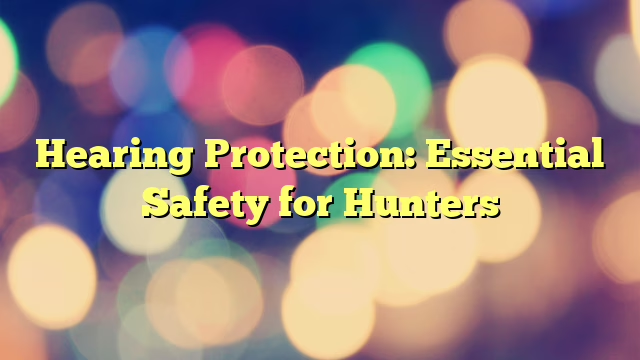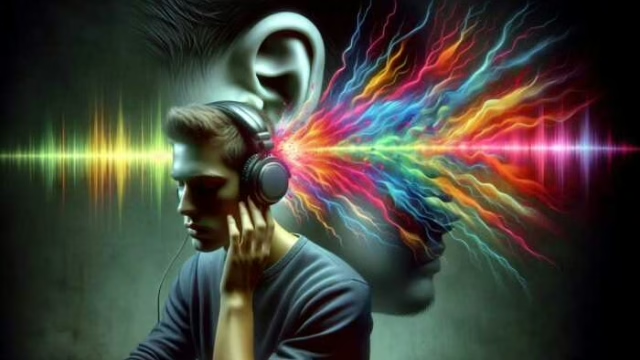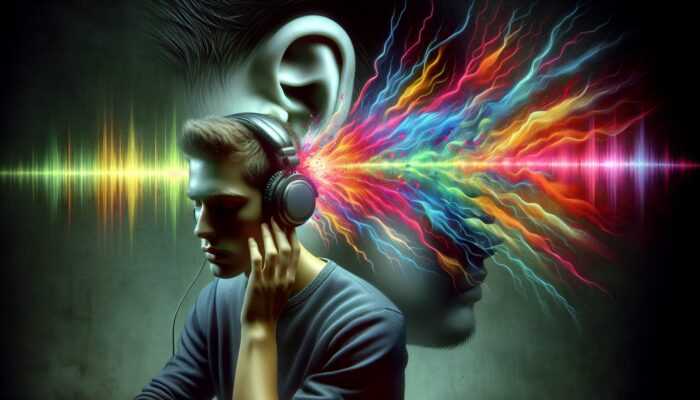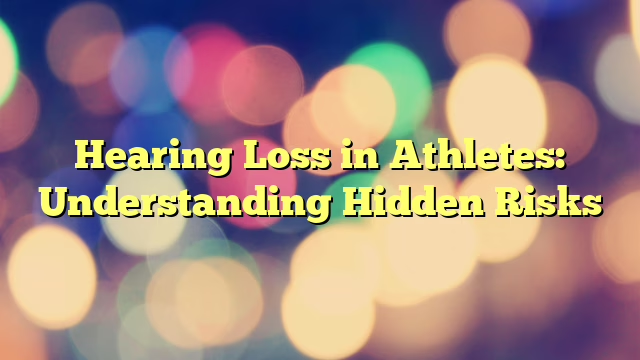Workplace Noise and Its Universal Effects on Hearing
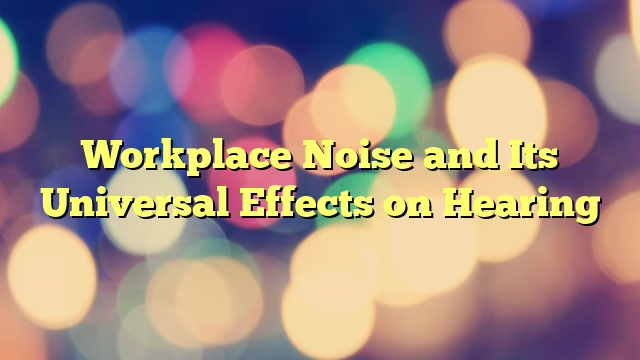
Last Updated on 04/12/2025 by Admin
Exploring the Various Sources of Workplace Noise
Identifying Common Sources of Noise in Work Environments
Workplace noise arises from numerous sources that can have a significant impact on auditory health and overall well-being. Recognizing these sources is essential for formulating strategies to reduce their adverse effects. Common contributors to workplace noise include industrial machinery, construction activities, and heavy vehicles. Additionally, office equipment like printers and copiers, along with employee conversations and meetings, play a role in the noise landscape. Other sources include HVAC systems, tools used in workshops and garages, background noise from nearby traffic, and music or sound systems in communal areas.
Each of these sources can contribute to a cumulative noise level that, if left unmanaged, may create an environment that is harmful to hearing health. The nature of noise generation varies widely across different industries, which necessitates customized approaches to effectively manage noise and protect employee hearing.
Effective Techniques for Measuring Workplace Noise Levels
Accurately quantifying workplace noise is vital for evaluating its potential effects on hearing health. Noise levels are quantified in decibels (dB), with established thresholds aimed at protecting auditory health. Exposure to sound levels exceeding 85 dB can result in detrimental effects. Various techniques for effectively measuring noise levels include utilizing sound level meters for direct measurements, employing dosimeters for personal exposure monitoring, implementing real-time noise analysis systems, and conducting noise mapping for comprehensive environmental assessments.
By employing these measurement techniques, organizations can pinpoint areas requiring attention, facilitating proactive noise management strategies. Regular monitoring not only ensures compliance with regulations but also plays a crucial role in safeguarding employees against avoidable auditory risks.
Understanding the Impact of Noise on Hearing Health
Extended exposure to elevated noise levels can result in irreversible damage to the auditory system, particularly affecting the inner ear. The cochlea, which is essential for converting sound waves into electrical signals, can sustain damage due to excessive sound pressure, leading to harm to sensory cells. This damage often manifests as hearing loss and other auditory issues, such as sound distortion.
The cumulative effect of persistent exposure can present itself in various forms, including diminished sound discrimination and increased challenges in understanding speech, especially in noisy environments. Recognizing these effects is vital for implementing effective interventions and maintaining a healthy workplace.
Exploring Health Risks Linked to Noise Exposure
Differentiating Between Temporary and Permanent Hearing Loss
Exposure to excessive noise can lead to both temporary and permanent hearing loss. Temporary hearing loss may occur after spending a day in a loud environment, resulting in muffled hearing or a sensation of fullness in the ears. Signs indicative of temporary hearing loss include difficulty hearing conversations, temporary ringing in the ears (known as tinnitus), feelings of pressure in the ears, along with fatigue or irritability following exposure.
While temporary hearing loss may recover after a brief period of quiet, repeated exposure can lead to permanent damage. Understanding this distinction is essential for implementing appropriate safety measures to safeguard auditory health in the workplace.
Addressing Non-Auditory Health Effects of Noise Exposure
The impact of noise exposure extends beyond auditory damage, presenting a range of non-auditory health risks. Prolonged exposure to noise can escalate stress levels, contributing to various health issues. The body’s physiological response to noise often triggers the stress response, resulting in elevated levels of cortisol and adrenaline, which can adversely affect cardiovascular health.
Chronic exposure to noisy environments is associated with an increased risk of conditions such as hypertension, heart disease, and anxiety disorders. Acknowledging these non-auditory effects is crucial for employers striving to cultivate healthier work environments and enhance employee well-being.
Implementing Prevention and Early Detection Strategies
Preventing hearing loss and other health issues associated with workplace noise necessitates ongoing monitoring and early detection strategies. Regular hearing tests are vital for identifying shifts in an individual’s auditory health before they escalate into serious conditions. Effective early detection strategies include conducting annual hearing assessments for all employees, implementing audiometric testing programs, raising awareness about the early symptoms of hearing loss, and providing access to audiologists for consultations.
By emphasizing early detection, organizations can adopt preventive measures that significantly lower the risk of permanent hearing damage, thereby fostering a safer workplace environment.
Recognizing Noise-Induced Tinnitus
A significant auditory condition that can arise from exposure to loud noise is tinnitus, which is characterized by a persistent ringing or buzzing sensation in the ears. This condition may be either temporary or permanent, often depending on the severity and duration of noise exposure. Common symptoms associated with tinnitus include persistent ringing, buzzing, or hissing sounds, difficulties in concentration due to noise, hearing loss that coincides with the perception of sound, and sleep disturbances caused by the intrusive noise.
Understanding the implications of tinnitus is essential for both employers and employees, as its presence can profoundly affect quality of life and productivity. Proactive management of workplace noise can help mitigate the risk of developing this debilitating condition.
Examining Occupational Noise Exposure Risks
Certain industries exhibit heightened susceptibility to elevated levels of occupational noise, placing workers at an increased risk for hearing loss. Sectors such as construction, manufacturing, and entertainment frequently present substantial noise hazards. Regulations established by organizations like OSHA in the United States aim to protect workers from these risks by mandating permissible exposure limits.
This regulatory framework is critical for ensuring employee safety and should be rigorously adhered to by employers. Understanding which sectors are most impacted by occupational noise enables organizations to tailor their safety protocols and provide the necessary protective measures for their workforce.
Gaining Expert Insights on the Effects of Workplace Noise on Hearing
Implementing Effective Noise Reduction Strategies
Establishing effective noise reduction strategies within the workplace can greatly diminish exposure and safeguard employees’ hearing. Engineering controls, such as soundproofing workspaces and modifying equipment, are pivotal in managing noise. Successful examples include the use of acoustic panels in manufacturing environments, installing vibration isolation mounts for machinery, redesigning workspace layouts to minimize noise transmission, and employing quieter machinery and tools as replacements.
Administrative measures are equally critical in reducing noise exposure. Strategies such as scheduling noisy tasks during less productive hours or rotating employees to minimize continuous exposure are effective. Collectively, these strategies contribute to creating a safer and more conducive work environment.
Utilizing Personal Protective Equipment (PPE) for Hearing Safety
The implementation of personal protective equipment (PPE) is essential for safeguarding hearing in noisy work environments. Earplugs and earmuffs are two commonly used types of PPE that can significantly lessen noise exposure. When selecting the appropriate PPE, consider these actionable steps: assessing the noise levels in the specific work environment, choosing ear protection that fits comfortably and securely, ensuring that the selected PPE meets regulatory standards, and training employees on the proper usage and maintenance of PPE.
By providing workers with suitable protective gear and educating them on its significance, organizations can foster a safety-focused culture while considerably reducing the risk of noise-induced hearing loss.
Understanding Regulatory Standards and Compliance for Noise Exposure
Compliance with regulatory standards concerning noise exposure is crucial for ensuring worker safety and health. Regulations set limits on allowable noise levels to shield employees from the adverse effects of prolonged exposure. Expert analysis reveals that while many organizations adhere to basic requirements, a considerable number still do not meet optimal safety practices.
Ongoing monitoring and regular audits of workplace noise levels are indispensable for maintaining compliance and verifying that protective measures are effective. Additionally, cultivating an organizational culture that prioritizes hearing conservation can enhance overall adherence to noise regulations, leading to a healthier workforce.
Exploring the Long-Term Effects of Noise Exposure on Health
Sustained exposure to workplace noise can lead to lasting effects that significantly impact an individual’s quality of life. Studies indicate that continuous exposure can result in irreversible hearing loss, a heightened risk of cardiovascular diseases, and increased stress levels. Expert opinions consistently underscore the importance of proactively addressing noise exposure to protect long-term health.
Research demonstrates a direct correlation between the duration of noise exposure and the severity of hearing damage. Organizations must prioritize noise reduction initiatives and employee education to effectively mitigate these long-term risks.
How Does Workplace Noise Influence Productivity?
Impacts on Concentration and Cognitive Function
Workplace noise can severely compromise concentration and cognitive performance, hindering employees’ ability to complete tasks efficiently. Continuous exposure to noise leads to shortened attention spans and obstructed problem-solving capabilities. Studies reveal that elevated noise levels can cause significant cognitive distractions, making it difficult for employees to maintain focus.
The cognitive repercussions of noise exposure can result in increased errors, diminished work quality, and decreased overall output. Organizations must acknowledge these implications and implement strategies to cultivate quieter work environments that promote enhanced concentration and productivity.
Overcoming Communication Challenges in Noisy Environments
Elevated noise levels create barriers to effective communication among employees. When workers struggle to hear each other, misunderstandings can arise, leading to decreased collaboration. This challenge undermines team dynamics and can disrupt workflows, ultimately impacting overall productivity.
To tackle communication challenges, organizations can adopt sound-reducing measures, such as establishing designated quiet zones for discussions and providing ear protection that facilitates communication without compromising hearing.
Recognizing the Economic Implications of Noise-Induced Distractions
The financial repercussions of diminished productivity due to noise are substantial for businesses. Noise-induced distractions can result in wasted time and lower quality outputs, directly affecting profitability. Studies estimate that organizations face significant economic losses resulting from decreased productivity, increased healthcare expenses, and higher employee turnover rates.
Understanding the potential economic impact of workplace noise reinforces the necessity for proactive management strategies that enhance productivity while protecting the bottom line.
Evaluating Stress and Health Impacts Related to Noise Exposure
Persistent workplace noise is a major contributor to elevated stress levels, which can negatively impact employee health and overall productivity. The physiological response to continuous noise can trigger chronic stress, leading to conditions such as anxiety and depression.
This noise-induced stress not only affects individual well-being but can also contribute to an unhealthy work environment. Organizations that prioritize noise reduction and employee health can foster a more productive and engaged workforce.
Implementing Noise Mitigation Strategies for a Healthier Workplace
Adopting effective noise reduction measures in the workplace can significantly enhance the overall work atmosphere and boost productivity. Strategies may encompass redesigning workspaces to minimize noise transmission, promoting the use of soft materials that absorb sound, ensuring regular maintenance of machinery to reduce operational noise, and training staff on noise awareness and mitigation techniques.
By implementing these strategies, organizations can create a more supportive work environment that encourages productivity while prioritizing employee health and safety.
What Are the Long-Term Consequences of Noise Exposure?
Understanding the Progression of Hearing Loss
Without timely intervention, hearing loss caused by noise exposure can worsen over time. The inner ear structures, especially the hair cells, do not regenerate once damaged. Continued exposure to loud environments can exacerbate the condition, resulting in progressively deteriorating hearing abilities.
Monitoring auditory health and seeking prompt intervention are essential for preventing the long-term progression of hearing loss. Regular hearing assessments can aid in early detection of changes, allowing for appropriate measures to be taken.
Exploring Quality of Life Impacts of Hearing Impairment
Hearing impairment can deeply affect social interactions and overall quality of life. Individuals experiencing hearing loss may face isolation and difficulties in engaging in conversations, which can impact personal relationships and societal participation. The social consequences may also lead to reduced job satisfaction and mental health challenges.
Employers play a vital role in supporting employees with hearing impairment by providing accommodations and fostering an inclusive environment that values communication and interaction.
Examining Rehabilitation and Treatment Options for Hearing Loss
Various treatments exist to help manage noise-induced hearing loss, ranging from hearing aids to cochlear implants, depending on the severity of the condition. Rehabilitation programs can also provide support for adapting to hearing loss, including audiovisual training and counseling.
Employers can assist employees by offering resources for rehabilitation and ensuring access to auditory specialists for consultations and support, ultimately enhancing employee well-being and quality of life.
Identifying Cardiovascular Health Risks Linked to Noise Exposure
Chronic exposure to noise can elevate the risk of cardiovascular diseases, including hypertension and heart disease. The stress response triggered by persistent noise exposure increases blood pressure and heart rate, which can lead to long-term health consequences.
Employers are responsible for safeguarding their workforce from noise-related health risks by implementing effective noise control measures and promoting a culture of health and safety within the workplace.
Implementing Effective Strategies for Managing Workplace Noise
Utilizing Engineering Controls to Mitigate Noise
Modifying equipment and workspaces can effectively reduce noise at the source. Engineering controls are crucial for creating a quieter work environment. Effective solutions for noise reduction include installing sound-absorbing materials in walls and ceilings, using quieter machinery and tools, implementing barriers to block noise transmission, and ensuring regular maintenance of equipment to minimize operational noise.
These engineering controls provide a proactive approach to noise management, ensuring that workplaces are safe and conducive to productivity.
Adopting Administrative Controls for Noise Reduction
Implementing administrative controls, such as scheduling and work practices, can significantly minimize employee noise exposure. Effective strategies include scheduling noisy tasks during off-peak hours, creating designated quiet zones for focused work, limiting the duration of exposure to noisy environments, and establishing clear noise policies that outline expectations.
These administrative measures play a pivotal role in noise management, assisting organizations in prioritizing employee health and well-being.
Enhancing Employee Training and Awareness Regarding Noise Hazards
Educating workers on noise hazards and protective measures is essential for fostering a safety-minded culture. A comprehensive noise safety training program should encompass information about the effects of noise on hearing, proper use and maintenance of personal protective equipment, strategies for identifying noise hazards in the workplace, and encouraging employees to report unsafe noise levels.
By raising awareness and providing thorough training, organizations can empower employees to take an active role in managing workplace noise, ultimately enhancing safety and well-being.
Frequently Asked Questions About Workplace Noise and Hearing Safety
What Noise Levels Are Considered Hazardous in the Workplace?
A noise level above 85 decibels (dB) is generally deemed hazardous, as prolonged exposure can lead to hearing damage and other health issues.
How Can I Determine If I Have Temporary Hearing Loss?
Signs suggesting temporary hearing loss include muffled hearing, a sensation of fullness in the ears, and temporary ringing or buzzing sounds that subside after a period of quiet.
What Are the Long-Term Effects of Prolonged Noise Exposure?
Long-term exposure to excessive noise can result in permanent hearing loss, increased stress levels, cardiovascular complications, and an overall reduction in quality of life.
How Do I Select the Appropriate Ear Protection for My Workplace?
Choosing the right ear protection entails assessing workplace noise levels, ensuring a comfortable fit, confirming that it meets regulatory standards, and providing training on proper usage.
Can Noise Exposure Influence My Mental Health?
Yes, chronic noise exposure can contribute to mental health issues, such as anxiety and depression, often triggered by elevated stress levels and communication difficulties.
What Is Tinnitus and How Is It Related to Noise Exposure?
Tinnitus is characterized by ringing or buzzing in the ears and can be induced by exposure to loud noises. Its duration may be temporary or permanent, depending on the severity of the exposure.
Which Industries Are Most Affected by Occupational Noise?
Sectors such as construction, manufacturing, and entertainment are particularly impacted by occupational noise, posing significant risks to employees’ hearing health.
How Frequently Should Hearing Tests Be Conducted in the Workplace?
It is advisable to conduct annual hearing tests for employees exposed to hazardous noise levels to monitor potential changes in their hearing health.
What Engineering Controls Are Effective for Reducing Workplace Noise?
Effective engineering controls include implementing soundproofing materials, utilizing quieter machinery, and establishing barriers to mitigate noise transmission, all aimed at reducing noise at the source.
How Can Organizations Foster a Culture of Noise Awareness?
Organizations can cultivate a culture of noise awareness through comprehensive training programs, open dialogue about noise hazards, and involving employees in noise management initiatives.
Join us on our journey on X!
The post Workplace Noise and Its Universal Effects on Hearing appeared first on The Microsuction Ear Wax Removal Network.
The post Workplace Noise and Its Universal Effects on Hearing appeared first on Healthcare Marketing Service.

